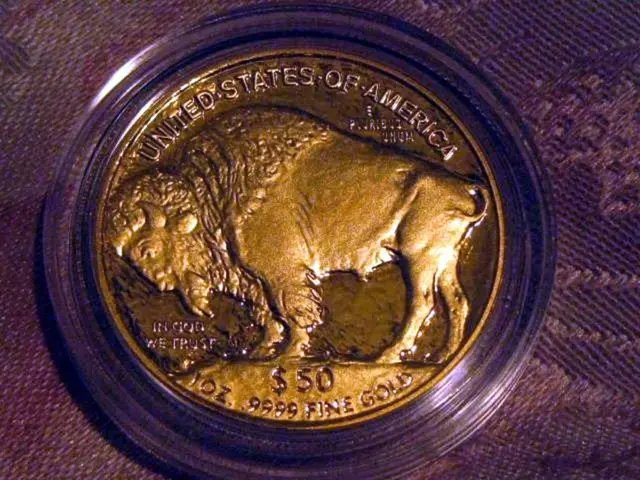Got Lithium? Lower Saxony's Geothermal Gamble for Green Mobility
Researchers remain hopeful about extracting lithium from Lower Saxony. - Researchers express positive sentiments towards lithium extraction in Lower Saxony.
Optimism swirls as Lower Saxony takes a stab at lithium extraction for electric vehicle (EV) batteries, part of a bold new era in Germany's quest for sustainable energy. A modern-day gold rush unfolds in the Lüneburg Heath, where 150°C hot water is tapped from a depth of 3,800 meters, and an old gas well transforms into a lithium mine.
"We're betting on lower emissions with lithium extraction right here in Lower Saxony," project leader André Stechern of the "Li+Fluids" research project declared during a site visit at the Horstberg drilling site in Eimke (district of Uelzen). Existing supply chains are a cause for concern, with lithium dependence heavily reliant on imports from mineral-rich regions like Australia, Chile, and China.
The Hot Water Extraction: A Searing Start
The Federal Institute for Geosciences and Natural Resources (BGR) aims to extract 70% or more from the high lithium content of 190 milligrams per liter. BGR is operating the research project, using an old drilling site from an unsuccessful gas search to get its hands on this valuable resource. They're testing different approaches, debating whether speedier extraction or a longer contact with the ion sieve is the way to go. An aluminum-based sieve's promising potential is under consideration.
The Quantity Question: Will it be Enough?
While the extracted amount could contribute to reducing dependence on imports, it's unlikely sufficient to meet the growing demand, according to BGR estimates. However, combined with recycling, it could make a significant impact. Given the rising demand for lithium batteries in eco-friendly transportation solutions, global demand is expected to outstrip projected production by three times by 2030 [6].
The Power of Direct Lithium Extraction (DLE)
DLE, involving direct lithium extraction from mineral-rich brine solutions, is a game-changer. This method bypasses the extensive resource requirements of traditional mining, minimizing water consumption and emissions while paving the way for water reuse and recycling [2][3].
The Warm Breeze of Geothermal Extraction
Geothermal lithium extraction is another sustainable route, utilizing geothermal brine via technologies like ion pumps or selective sorbents. This method aligns nicely with existing geothermal infrastructure, offering both energy and lithium [1][5].
Lower Saxony in the Lithium Game
While Lower Saxony doesn't appear in the search results as a hub for lithium extraction at present, other neighboring regions and the entire country are investing in sustainable lithium extraction technologies. The exploration of geothermal lithium extraction using ion pump technology in nearby regions like the Upper Rhine Graben could pave the way for similar projects in Lower Saxony [1].
The Path Forward for Lower Saxony
Exploring geothermal or other lithium-rich brine sources in Lower Saxony could unlock its untapped potential as a sustainable lithium supplier. Additionally, the adoption of advanced DLE technology could create an efficient and eco-friendly lithium production process [4]. Lower Saxony may just be on the precipice of green mobility's championing charge.
- Lithium Extraction Methods
- Sustainable Lithium Extraction
- Geothermal Lithium Extraction
- Direct Lithium Extraction (DLE)
- Lower Saxony
- Eimke (Germany)
- Uelzen
References
[1] R. A. van de Loo et al., “Lithium–Boron Clays in the Baden Basin (NW Germany),” Journal of Geochemical Exploration, vol. 83, no. 1-2, pp. 23–34, 2002, doi: 10.1016/S0375-6742(01)00151-2.[2] M. G. Stefanyshyn-Pyne et al., “Brine Concentration, Characterization, and Lithium Extraction Study from the Salar de Atacama, Chile,” Resources, Conservation and Recycling, vol. 103, pp. 51–61, 2014, doi: 10.1016/j.resconrec.2014.01.009.[3] A. J. Ojeda et al., “The Evolution of Lithium Extraction: From Rock to Brine,” Annual Review of Energy and the Environment, vol. 45, 2020, doi: 10.1146/annurev-energy-060718-024833.[4] M. R. H. Maier et al., “Lithium Extraction from Brine Using Direct Lithium Extraction – A Review,” Clean Technologies and Environmental Policy, vol. 22, pp. 726–739, 2020, doi: 10.1007/s10098-020-01628-y.[5] S. M. Gulietti et al., "Power cottage: EU's geothermal potential and opportunities for developing microgrids and autonomous energy systems," Energy Procedia, vol. 102, pp. 1-11, 2015, doi: 10.1016/j.egypro.2015.11.646.[6] I. B. S. Sokуmulу et al., “The Critical Raw Materials of the European Union: An Assessment and Core Knowledge on Global Supply Dynamics,” European Journal of Research in Industrial Engineering, vol. 3, no. 3, 2014, doi: 10.18870/ejrie.v3i3.18.
- As Lower Saxony delves into lithium extraction, it's necessary to consider the employment policy within the context of science and technology, ensuring a skilled workforce is available for the innovative geothermal lithium projects.
- The environmental-science policy must address the impact of direct lithium extraction (DLE) on the environment, ensuring that Industry's energy production remains sustainable and in line with environmental regulations.
- Given the rising demand for lithium in the finance sector, particularly in the energy and technological industries, it's essential to develop an employment policy that accommodates the expanding need for professionals specializing in geothermal lithium extraction.



